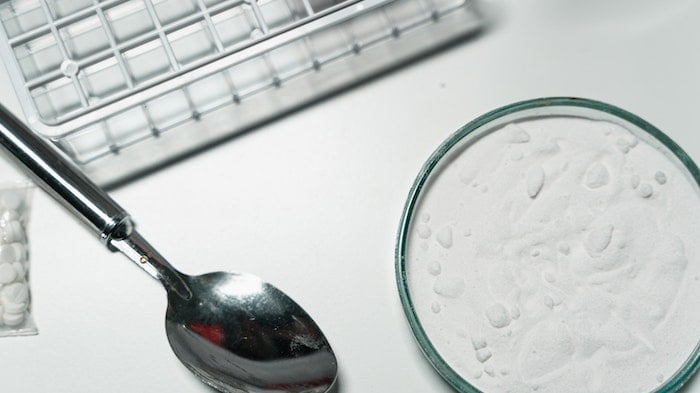- Home
- Addiction Guides
- Stimulant Drug Addiction: Types, Effects & Rehab Treatment
Stimulant Drug Addiction: Types, Effects & Rehab Treatment
When it comes to researching the drug types, their effects, and the necessary rehab treatment needed in order to overcome their negative health effects, it can be difficult absorbing the abundance of information which is out there.
While many of us know about some of the most commonly discussed forms of illicit drugs, researching the different types of substances will make us realise that there are far more drugs and classifications of drugs than we were previously aware of.
Drugs are categorised according to how they affect our brains and our body. There are different kinds of drugs, and people will consume or even become addicted to certain drugs in order to experience the unique characteristics of that specific substance.
Frequent and excessive consumption of these drugs will lead to a range of physical and mental health complications.
So, what are the different types of drugs?
1. Depressants
This is a kind of drug which affects our mind and central nervous system, or CNS, by depressing it. What this means is that it reduces the activity in the brain and CNS by interfering with brain receptors.
Often, it is taken in order to feel more relaxed. Some examples of depressants are cannabis, alcohol, benzodiazepines, and more.
2. Hallucinogens
These types of substances affect our senses. They affect the way that we see, hear, feel, smell, or taste things. They may exaggerate things that we can sense, or they may even cause us to hallucinate entirely new things.
Hallucinogens effectively change what we perceive and our connection with reality. Some examples of hallucinogens are mushrooms, ketamine, LSD, cannabis, and more.
3. Stimulants
Stimulants are a form of drug which essentially have the opposite effects of a depressant.
While depressants are used in order to slow things down in the brain and its receptors, stimulants are used in order to increase the activity in the brain and body, making things feel much more sped up and people feel awake and alert.
What Exactly is a Stimulant Drug?

Our brain has many receptors, also known as neurotransmitters.
The primary function of these receptors is to help us deliver and process signals which are occurring. In more simple terms, they essentially communicate with other receptors in the brain in order to allow us to pick up messages, thus allowing us to experience and feel things which are happening in our body.
By consuming a drug which is classified as a stimulant, we are increasing the level at which these brain receptors work. Their activity will be far higher, making them stimulated.
When we consume stimulants, we will feel much more awake, alert, and responsive to things which are happening in our body and also to things which are happening around us.
They are also believed to increase the level of dopamine in the brain, the ‘feel good’ hormone. When our brains release dopamine in great quantities, we may experience greater feelings of pleasure, motivation, attention, and more.
However, there are also many negative symptoms which might occur.
Stimulant Drugs: What are the Types and What Are Their Effects?
Stimulant drugs come in many different forms, not just one form. They can be swallowed as pills, or they can be injected, snorted, or smoked, depending on their form.
Drugs which are stimulants may come in the form of illicit substances or they may even come in the form of prescription drugs.
Some of the most commonly used forms of stimulant drugs include:
- Cocaine, also known as coke.
- Crack cocaine.
- Methamphetamines (e.g. Crystal Meth).
- Amphetamines: Prescription Drugs (e.g. Adderall, Ritalin, Didrex, and much more).
Short-Term Effects of Consuming Stimulants
Stimulants refer to a class of drugs which increases activity in the brain and the central nervous system.
When a person consumes a high amount of stimulant substances, not only will they feel more awake, focused, and energised, their brain will release chemicals (such as dopamine) which can stimulate feelings of euphoria. This is why it is addictive.
However, stimulants don’t just come in one form. They come in many different forms and are combined with different substances in order to ‘cut’ the stimulant (the act of diluting it and making it less pure, and less expensive to produce).
Or, they may be processed in a way in which they are fit for consumption by patients.
The form in which it is modified and consumed will yield different physical and mental depending on what chemicals are involved. Crack cocaine, for example, will be far more toxic and addictive than a pill containing a prescription drug, because of the quantities involved as well as the other substances that are mixed.
Long-Term Effects of Consuming Stimulants
While people continue to consume these stimulants in order to feel stimulated and also pleasure, it can lead to a range of negative mental and physical complications.
Firstly, stimulant drugs are highly addictive. This means that the more that someone consumes stimulants, the more that their brain will associate this drug with the release of dopamine, and thus the feeling of pleasure and exhilaration.
The more that they consume this, the higher their tolerance will become, and they will need to consume a higher quantity of stimulants in order to feel the same effect.
This will lead to a dangerous cycle of increased consumption frequency and quantity, which will inevitably lead to addiction, also known as substance use disorder.
When someone is addicted to something, their brain has been modified in a way in which it relies on that substance or form of behaviour in order to feel pleasure.
This means that they will suffer from physical and psychological withdrawal symptoms when they are abstaining from these substances, and they will be unable to release dopamine naturally as they did before.
This will lead to a range of mental health issues such as anxiety, paranoia, and depression. Because the brain is now dependent on this substance, it is now unable to naturally produce dopamine and other chemicals which make us feel good as it did before.
People who are addicted to stimulants are much more likely to entertain suicide ideation, risky forms of behaviour, and the consumption of other dangerous substances.
What is Cocaine?

Cocaine is not only one of the most well-known and most consumed drugs, but it is also a form of stimulant. This substance is often referred to as coke, blow, dust, flake, beak, among many other names.
More often than not, cocaine comes in the form of white powder, and it is often snorted in order to quickly absorb it into the bloodstream. However, it can also be injected or smoked, which may yield greater levels of euphoria and different health complications.
Why Do People Consume Cocaine?
Cocaine is quickly absorbed into the bloodstream and it can provide a euphoric feeling very quickly. Cocaine has been a very popular drug for decades and even longer, and it is often used when people are also consuming alcohol at parties, bars, and nightclubs.
If people are feeling fatigued, they may consume cocaine in order for an energy surge.
However, there is also widespread use of cocaine in professions which require high levels of attention and energy in order to perform (e.g. bankers, chefs). Studies show that hospitality and restaurant workers are among some of the highest cocaine consumers when it comes to professions due to the high demand and high level of stress.
As a stimulant, cocaine has many short-term effects which increase a person’s activity levels. Some of the short-term effects of consuming cocaine include feelings of euphoria, reduction in inhibitions, wakefulness, positivity, and extreme confidence.
When people are on cocaine, they are more likely to communicate more openly and may even become arrogant to others. This is because their self-consciousness, as well as inhibitions, are significantly reduced, and their confidence and sociability may be enhanced greatly.
What Are The Long-Term Effects of Cocaine Consumption?

While people do consume cocaine in order to experience feelings of euphoria as well as increase their confidence, energy, and so on, it does have many problematic short-term and long-term effects.
Cocaine is highly addictive, and the more that people consume it, the more they will suffer from its negative health complications.
Mentally, cocaine consumption can lead to long-term problems such as anxiety, depression, and even suicide ideation. Despite making people feel better initially, it can worsen symptoms of mental health disorders and even cause them.
There are also many physical health effects related to cocaine consumption. Frequent cocaine consumption can have a significant effect on your appearance, specifically your nose.
Not only will heavy consumption of this addictive and highly toxic substance cause a runny nose, nosebleeds, nasal irritation, and so on, it has the capacity to deteriorate your nose cartilage. This is because fewer blood cells are in your nose when you snort cocaine, and this leads to the death of nasal cells due to a lack of oxygen.
Since cocaine is a stimulant and increases activity in the brain and body, it can elevate your heart rate and blood pressure significantly as well as develop an irregular heartbeat. This will also affect your arteries in a way which can lead to heart disease and other issues.
The higher quantities of cocaine that you consume, the more dangerous this is for your heart because you are risking a heart attack, a stroke, and other potential heart complications which often lead to premature death.
Some people decide to ingest cocaine by smoking it. By smoking it, cocaine can enter someone’s bloodstream and brain almost immediately. This can give them an immediate high, and the risk of becoming addicted is significantly higher when smoking it.
However, smoking cocaine leaves people far more susceptible to overdosing because of how much of the substance they consume so suddenly. Additionally, it can permanently damage the lungs in a way which can cause pneumonia, bronchitis, emphysema, and more.
What is the Difference Between Cocaine and Crack?
Cocaine often comes in the form of white powder, whereas crack cocaine is a form of cocaine which can be smoked.
Crack cocaine is combined with other substances such as baking soda, in order to create solid forms which are referred to as ‘crack’, and people will heat it up in order to smoke it.
Crack cocaine is considered to be more effective and addictive than cocaine, and this is because of the way in which it is consumed. By smoking crack cocaine, the illicit drug enters the bloodstream more quickly. However, its effects last for a shorter amount of time than cocaine.
The euphoria and feelings associated with crack cocaine is almost immediately experienced when it is smoked, making it highly addictive. In fact, some studies suggest that it is possible to become addicted to crack cocaine within the first consumption, however, it is unlikely.
Because of its almost immediate but short-lasting effect, people are likely to keep chasing the high which diminishes sooner than it does with cocaine. This makes them much more likely to become addicted.
Much like with cocaine, crack cocaine has effects such as increased body temperature, heart rate, and blood pressure, as well as potential cardiovascular problems such as heart attack and stroke.
What Are Methamphetamines?
Methamphetamines are another form of powerful stimulant which are also highly addictive. While they are also commonly referred to as meth, they may also come in different forms and be referred to as crystal meth, ice, glass, among other different names.
Meth can be smoked, snorted, or injected depending on its form. Pop culture shows such as Breaking Bad often show meth in a crystallised form, which is known as called crystal meth.
This is what many people associate with the drug, as well as its addicted consumers who look severely compromised.
Why Do People Use This?
Similar to cocaine, meth can provide a strong euphoria for its consumers almost immediately. It can also invoke feelings of arousal and incite sexual activity among its consumers.
Much like cocaine and other stimulants, because it stimulates the central nervous system, people may experience feelings of euphoria due to the chemicals which are released in the brain.
Long-Term Effects of Consuming Methamphetamines
While it may initially give people feelings of euphoria, heightened activity, and more while they are consuming the substance, consuming methamphetamines for a long time has a range of mental and physical health complications.
When people are at the withdrawal stages and are suffering from the ‘crash’ or ‘come down’ may become irrational, angry, and suffer from feelings of irritability and anxiety.
Aside from the withdrawal symptoms, mental health problems are inevitable when it comes to frequent and excessive meth use. Meth use can lead to anxiety and depression in the long term, as well as other problems such as hallucinations and psychosis, making it incredibly difficult for people to differentiate what is real from what is not.
After a prolonged period of consistent meth consumption, people may suffer from symptoms such as increased blood pressure and heart rate, which can expose people to risks of heart attacks and strokes.
When compared to other addictive substances, the addiction potential to meth is very high. This is why people continue to consume meth despite the negative health effects and social effects that it has.
Not only are the symptoms confined to things we may not immediately see, such as chronic brain relapsing, mental health issues or high blood pressure, many of its symptoms are not only visible but profoundly associated with meth consumption.
Other symptoms of excessive and frequent meth consumption include skin lesions. Because meth users may suffer from inflammation and severe itching, they often resort to picking their skins, which becomes a habit and can lead to scabbing and even scarring.
If they are not already scarred, these marks can take months to heal. These lesions are often on the arms and the face, and people may refer to it as ‘meth face’.
In addition to what people may refer to as ‘meth face’, they may also suffer from other visible symptoms such as ‘meth mouth’. This is where frequent meth consumption leads to severe tooth decay and gum disease.
What Are Prescription Stimulants?

Not all forms of stimulant drugs are illegal and banned from consumption. Prescription stimulants are legal drugs which are prescribed by doctors to patients. Some of the most commonly known examples include Ritalin and Adderall.
Adderall and Ritalin are used in order to treat patients who are suffering from Attention Deficit Hyperactivity Disorder, also known as ADHD.
These are prescribed medications that treat patients who are suffering from hyperactivity, impulsivity, and attention deficit by making them more concentrated and focused. This can help them focus on tasks required in their occupation or their studies.
Why Do People Use Prescription Stimulants?
Obviously, people who require medication in order to treat conditions such as ADHD will consume prescribed medications which are stimulants in order to manage their condition. However, people may misuse these prescribed drugs in order to experience other benefits.
Some people may consume these drugs in a far higher dose than prescribed by the doctor, or they may take medicine which isn’t prescribed to them in order to become high. And rather than swallowing them in pills, pills may be collected and crushed up in order to be snorted and absorbed into the bloodstream more quickly.
Like many other stimulants, consuming Ritalin or Adderall, for example, for recreational purposes may achieve feelings of alertness and high levels of energy, as well as feelings of euphoria with the release of chemicals in the brain.
People may also refer to these as ‘study drugs’, and may consume them in order to maintain their focus while studying or working at their jobs. This is despite them not suffering from conditions such as depression or ADHD which require these substances.
It is estimated that around 20% of university students have consumed study drugs at some point in order to help them with their education.
Can Prescription Stimulants Improve Our Brain Performance and Make Us More Intelligent?
Contrary to what people think and why some people take these prescription drugs, they don’t actually make us smarter, and they aren’t some form of “brain steroids”. While they can make us feel much more alert and focused to complete the task at hand, it does not make us more intelligent.
Studies also show that people who consume study drugs are more likely to be experiencing placebo effects rather than actual effects which are benefitting their cognition during their studies.
Long-Term Effects of Consuming Prescription Stimulants
While people may be consuming these substances in order to treat their mental conditions, others may be taking advantage of their or another person’s prescription in order to get high off of these substances.
Like any other drugs, consuming them frequently may lead to a dependency and addiction. The more they consume, the higher their tolerance will be, and the more they will consume in order to reach the same levels of concentration or euphoria.
Consuming these prescription drugs in excess of what the doctor has prescribed is hazardous. Doctors will prescribe only a certain amount in order for patients to consume at safe levels, and despite it being a prescription drug, it is also highly addictive if misused and taken in excessive quantities.
If students are exposed to these substances early on in their studies, they may become dependent on these substances in order to remain productive. This can lead to problems focusing and remaining productive in other areas of life if the subject is addicted yet does not have access to the prescription stimulant.
Addiction to prescription stimulants such as Ritalin, for example, can lead to mental health issues such as anxiety, irritability, erratic emotions, and more. It can lead to physical problems such as nasal membrane damage, and overdosing on these substances can lead to heart failure and seizures.
Recovering From Stimulant Drug Addiction at a Drug Rehab Facility

If someone is addicted to a stimulant drug, whether it be in the form of cocaine, methamphetamines, or prescription stimulants, for example, they will be required to seek professional help.
While there are many tips and much advice to take on how to live a sober life, the most effective way to overcome addiction and to become sober is to enter a drug rehabilitation facility.
People will need to be officially diagnosed by an addiction psychiatrist and be referred to a rehabilitation centre or simply rehab to undergo comprehensive treatment. By contacting a rehab provider, people who are suffering from addiction can begin the process of recovery.
What Happens at Rehab?
When someone enters rehab in order to receive treatment for their drug addiction, they will undergo a range of treatment methods which are designed to help them recover from their physical and psychological addiction to drugs.
Not only will they recover from their addiction, but rehab will help them recover from any mental or behavioural issues that they suffer from.
Patients will also need to undergo a stimulant detox to be able to recover effectively. When recovering from addiction, people may suffer from intense withdrawal symptoms because they are abstaining.
Because of how discomforting they can be, it can result in a relapse. A detox will help patients overcome withdrawal symptoms safely.
After their detox, they will be able to undergo therapy and counselling in order to help them remain sober. Therapy is multi-varied and may come in the form of Cognitive Behavioural Therapy, Support Sessions, Family Therapy, and much more.
Following a successful period of recovery at rehab, patients will be able to leave and resume their life with more independence. They will be able to apply the skills and knowledge that they have learned at rehab in order to sustain their sobriety and live a healthier lifestyle of abstinence.
However, they will not be entirely independent.
They will continue to receive support in the form of an aftercare programme and services courtesy of their rehab. Aftercare programmes will vary from one rehab to another, but they will allow patients to access support groups, therapy and counselling sessions, career advice, and more.
Detox for Stimulant Drug Addiction
Withdrawal symptoms for stimulant drugs can be both physical and psychological, and symptoms can range from headaches, vomiting, fatigue, lethargy, to something more severe such as hallucinations, depression, and so on.
Because the symptoms can be very harmful and problematic, they may interfere with recovery if not addressed.
The severity of withdrawal symptoms will range from patient to patient. One patient may be required to suddenly abstain from their substance, whereas another may be asked to taper by gradually decreasing the number of stimulant drugs they are consuming, in order to minimise the withdrawal symptoms when they eventually abstain.
At a residential rehab, where patients receive a higher quality of support, they will undergo the detox in a safe and supervised facility. Once they have safely overcome their withdrawal symptoms, they will be able to continue with the rest of their recovery.
Therapy for Stimulant Drug Addiction

Therapy can mean a wide range of treatment approaches. Although patients will vary from their personality, addiction history, and their unique needs, therapy is flexible and does not follow a ‘one size fits all’ method.
One person may be referred to a rehab which specialises in treating crack cocaine addiction, whereas another may enter one which is more optimal for treating cocaine addiction. However, most rehabs will have the skills and facilities to treat most forms of substance addiction.
Instead, a wide range is used in order to help target many different aspects of someone’s addiction. Some of the popular forms of therapy used in rehab include:
- Cognitive Behavioural Therapy (CBT): A highly popular form of therapy which is used to treat people suffering from substance use disorder, anxiety, depression, bipolar disorder, and more. It is done in a one-to-one format, and it consists of identifying and changing some negative and self-destructive habits which the patients have. Not only will their recovery improve, but other aspects of their life will also improve.
- Dialectical Behavioural Therapy (DBT): Much like with CBT, DBT helps people overcome challenges in life by discarding their bad coping mechanisms in favour of healthier ones. What makes DBT different from CBT is that it helps people who suffer from intense emotions to manage their feelings and energy.
- Holistic Therapy: Hence the term ‘holistic’, this form of therapy aims to not only help the patient mentally deal with their addiction but to also help them physically and spiritually. The purpose of holistic therapy is to improve the mental, physical, and spiritual, in order to make the patient’s overall well-being improved to undertake recovery.
- Motivational Interviewing: The purpose of this form of therapy is to increase the patient’s willingness and motivation to take part in therapy. By being more motivated, patients are more likely to see results from attending therapy.
- Family Therapy: The family of the addicted person can play an important role. Whether they have a positive influence on their family, or their patterns of behaviour can worsen their loved one’s addiction, family members will learn about how they can support their loved one.
- Group Therapy: Not all forms of therapy are confined to a one-to-one format. Group therapy can be beneficial because by including other patients seeking recovery, you are placing patients in a safe and non-judgemental environment where they can share their experiences with like-minded and supportive individuals.
Aftercare for Stimulant Drug Addiction
Patients will not only be supported while they are undergoing their treatment programme at rehab, but they will also continue to receive support after rehab in the form of an aftercare programme.
An aftercare programme is designed to support the patient in a number of ways following their time at rehab. They may be able to continue attending counselling sessions, and they will be granted access to support groups such as Narcotics Anonymous or SMART Recovery, for example.
People who are addicted to drugs can also join Alcoholics Anonymous.
At these support sessions, patients will have a new form of support network and community who can support them during their recovery. Many of these support groups adopt the 12 Step Programme in order to give themselves a support structure to follow during post-rehab life.
Furthermore, the rehab that the patient attended may even help them with financial advice as well as assistance in job seeking. The benefits are not only limited to recovering from addiction, but they involve rebuilding your life following addiction.
References
[1] How is Cocaine Used? https://nida.nih.gov/publications/research-reports/cocaine/how-cocaine-used
[2] Methamphetamine https://www.dea.gov/factsheets/methamphetamine
[3] The Truth About Study Drugs https://www.psycom.net/the-truth-about-study-drugs
[4] Crack Cocaine Rehab https://www.rehab-recovery.co.uk/drug-rehab/crack-cocaine-rehab/
[5] Cocaine Rehab https://www.rehab-recovery.co.uk/drug-rehab/cocaine-rehab/
[6] Cognitive Behavioural Therapy in Addiction Treatment https://www.rehab-recovery.co.uk/addiction-treatments/cognitive-behavioural-therapy/
[7] Dialectical Behavioural Therapy (DBT) for Addiction Treatment https://www.rehab-recovery.co.uk/addiction-treatments/dbt/
[8] Alternative & Holistic Therapy for Addiction https://www.rehab-recovery.co.uk/addiction-treatments/alternative-holistic/
[9] Motivational Interviewing for Addiction Treatment https://www.rehab-recovery.co.uk/addiction-treatments/motivational-interviewing/
[10] Narcotics Anonymous https://ukna.org/
[11] SMART Recovery https://smartrecovery.org.uk/
[12] Alcoholics Anonymous https://www.aa.org/
[13] 12-Step Recovery Programme https://www.rehab-recovery.co.uk/addiction-treatments/12-steps/




